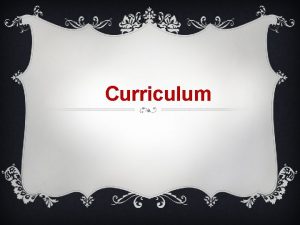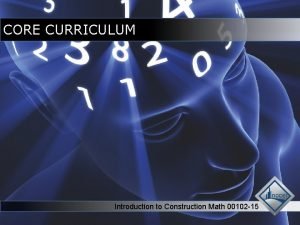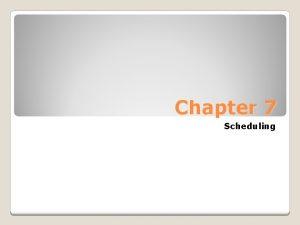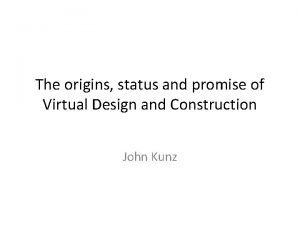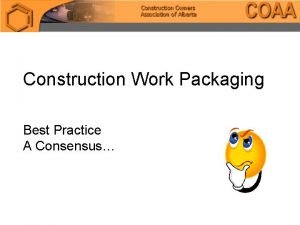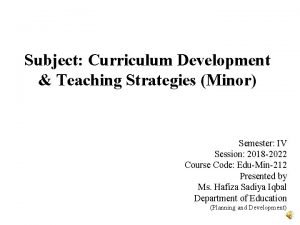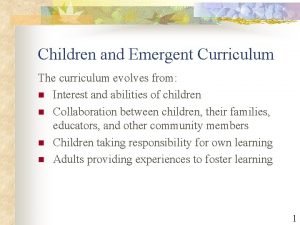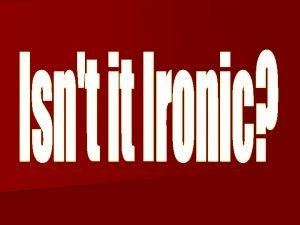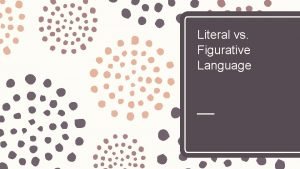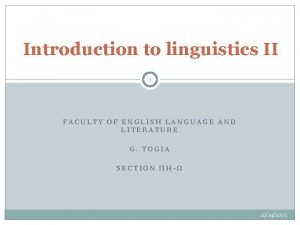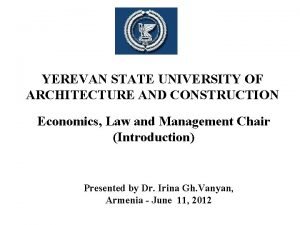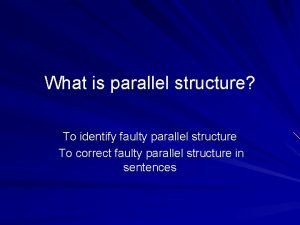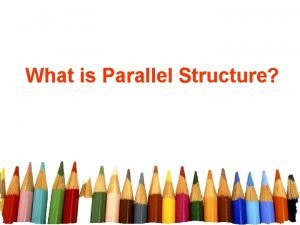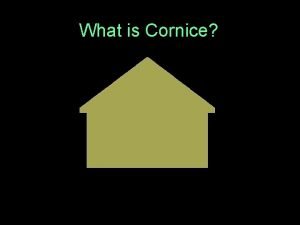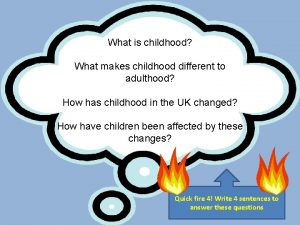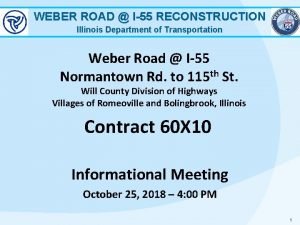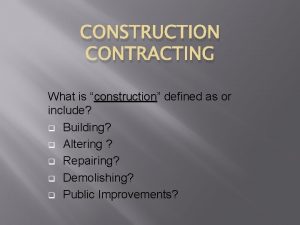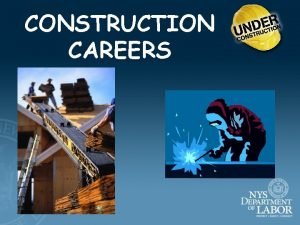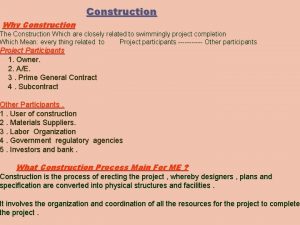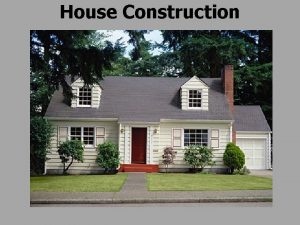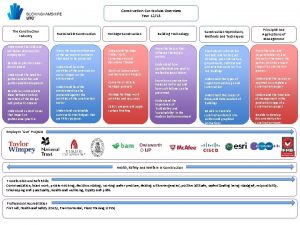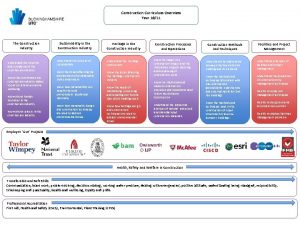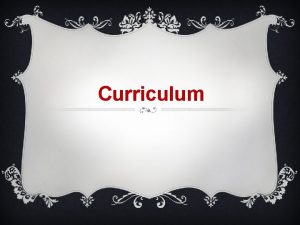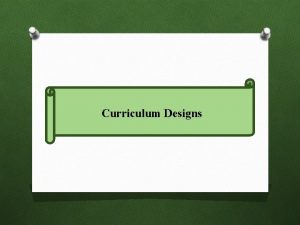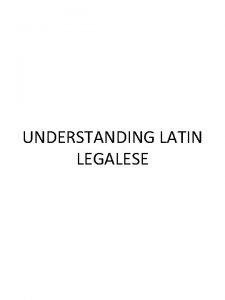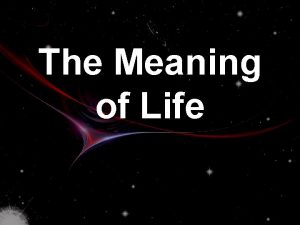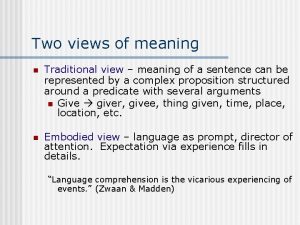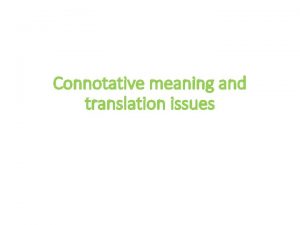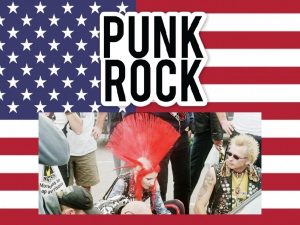Curriculum Construction 1 Meaning of Curriculum 1 Curriculum



















- Slides: 19

Curriculum Construction 1

Meaning of Curriculum 1. Curriculum as subjects & subject matter • Subjects and subject matter taught by teachers and given in textbooks. This concept follows the following procedure for curriculum planning: - Social and educational factors - Interests of the students - Methods of teaching 2

2. Curriculum as Objectives Curriculum is concerned not with what students will do in the learning situation but with what they will be able to do as a result of what they do. Curriculum consists of aims and objectives or ends. 3. Curriculum as Program It includes the courses of study, various programs and activities organized by the school for the students. 3

4. Curriculum as Personal Experiences of the Learner Curriculum can only be found in the learning that they get from their personal experiences. The focus is on the learner and learning and inclusion of all the planned as well as unplanned experiences. 4

The Educational Curriculum The term is used for many different kinds of program of teaching and instruction. It is defined in terms of what teaching and instruction is to be offered and what its purposes, its objectives are. The Total Curriculum The content or the body of knowledge they wish to transmit or a list of subjects to be taught or both. 5

Hidden Curriculum (Implicit forms of learning) • Hidden aspects of school curriculum. • Hidden implications of some of the materials and the experiences they offer their pupils. • This kind of curriculum is not directly planned and imposed by the government. The Planned Curriculum and the Received Curriculum • The planned curriculum is official. It means what is laid down in syllabus. • The received curriculum is the reality of the pupils’ experiences, what is actually received by pupils. 6

The Formal Curriculum and the Informal Curriculum - Formal activities for which the timetable of the school allocates specific periods of teaching time. - Informal activities that go on as voluntarily basis, at lunch time, after school hours, at weekends, or during holiday. These activities – sports, clubs, school journeys and the like are called “extracurricular” 7

Elements of Curriculum There are four dominant views about the curriculum: 1. Humanism 2. Developmentalism 3. Social Meteorism 4. Social Efficien 5. cy Humanism: It provides answers to ‘How can society provide their young with weapons against ignorance. ’ According to humanism, curriculum was nothing less than the mechanism by which the individual was elevated into the species and becomes privy to the accumulated knowledge and wisdom of the race. Developmentalism: The child was the centre of the curriculum. Curriculum should be according natural growth of the students. 8

- ‘Project’ method by Kilpatrick in (1920) and ‘free schools’ in 1960’s and 1970’s were reflection of this view but perished soon because organization structure of the schools did not suit them. Social Meteorism: - It conceived education as the great panacea for all social ills / diseases. - The curriculum based on this conception promotes equalitariaism. - Later, it was developed by Counts who wanted the schools to be an agent for change in society. Social Efficiency: - It had more influence on organization and instruction of the school curriculum. Ralph Tyler’s Book (Basic Principles of Curriculum Instruction) is representation of this curriculum. 9

Content of the Curriculum There are two schemes that define the content of the curriculum: • Child-centered curriculum • Discipline-centered curriculum The main features of child-centered curriculum: - Curriculum was a social invention. - Society changes rapidly while schools emphasize intellect. - Curriculum should take care of intellect as well as emotion, purpose and action. - Teacher was to play a difficult role. 10

The main features of discipline-centered curriculum: - The object of education was to penetrate a subject, not cover it. - Spiraling is looked at first taking a pass through the discipline to obtain an intuitive sense of the subjects. - The school is more intellectual. 11

Components of the Curriculum 1. Content: It refers to what is specifically taught in the classroom. Some teachers organize content in chronological order while others organize from simple to complex. 2. Concepts: A concept is an idea of an abstraction about particulars. They can be used as organizers for the content. 3. Skills: Skills are content-free and can thus be applied or transferred to new situations. Skill subjects: language / math / typewriting Skill development: Bloom’s taxonomy of educational objective as third level of cognitive domain. 12

4. Values: A good curriculum must take all three types into account. They are: A. Behavioral values B. Procedural values C. Substantial values 13

Goals of Curriculum Planning • Goals and objectives are defined as follows: “Goal: a broad or general statement reflecting the ultimate ends towards which the total educational programme is directed. General Objective: a statement reflecting the purpose of a particular unit or level of the school programme such as elementary, middle level or high school. Specific Objective: a statement reflecting a short-range or more immediate purpose involved in a specific teaching-learning activity such as a unit or daily plan. ” 14

Goals can also be divided into two categories: (a) Learner goals which are described in the form of kinds of behaviors, knowledges and attitudes which are prescribed in the hope that learner achieve them through curriculum. (b) School goals which are described in general terms which school proposes to provide to its students. They may be in the classroom as well as outside the classroom. The schools goals are influenced by outside social forces. 15

Goals of Curriculum Planning: Since curriculum represents the total educational programme of a school, it should be based on three principles: (a) They should be based on philosophical, social and psychological foundations. (b) They should be developed through the participation of all the members of the society. (c) Goals statements should be helpful in their clarification with additional information. 16

The following goals of curriculum are suggested: (a) To help acquire skills of understanding, speaking, reading and writing of mother tongue and one or two other languages. (b) To help to develop analytical thinking skills. (c) To help acquire knowledge of different cultures and appreciation of them. (d) To help to develop qualities of good citizens. (e) To help to live a successful personal and family living. 17

Goal Analysis of Curriculum: Some criteria are to be used for analyzing the curriculum regularly. The criteria are as follows: 1. The sociological, philosophical and psychological foundations should be carefully analyzed. 2. Any of the goals may be found ambigious when implemented. It will be necessary to make it unambigious so that curriculum planning may be properly guided by all the goals. 3. The teachers, the students and the parents are the important parties for whom the curriculum is meant. 4. The curriculum goals can never be static. 5. Attempts should be regularly made to keep internal consistency in curriculum goals. 18

General Objectives of Curriculum: General objectives represent the purposes of a particular unit or level of the school programme. General objectives define two aspects of the curriculum. They are: 1. “Scope” which represents the contribution made at a particular level. 2. “Sequence” which reflects the flow of experience. It may be immediate environmental in the case elementary level and the whole world in higher secondary level. In general objectives are also included in curriculum planning, the curriculum planner can plan curriculum for each level of education according to them. Specific Objectives: In day to day classroom teaching the teacher identifies specific objectives which he proposes to attain through a particular day’s teaching. 19
 Contoh bahan kajian
Contoh bahan kajian What are the principles of curriculum construction?
What are the principles of curriculum construction? Mudaliar commission
Mudaliar commission Construction math curriculum
Construction math curriculum Dangling in network diagram
Dangling in network diagram Vdc meaning construction
Vdc meaning construction Construction work pack
Construction work pack Need and importance of curriculum
Need and importance of curriculum Emergent curriculum meaning
Emergent curriculum meaning Curriculum intent definition
Curriculum intent definition Grammatical meaning in semantics
Grammatical meaning in semantics Difference between literal and implied meaning
Difference between literal and implied meaning Literal meaning vs figurative meaning
Literal meaning vs figurative meaning Associative meaning in semantics
Associative meaning in semantics Yerevan state university of architecture and construction
Yerevan state university of architecture and construction Faulty structure
Faulty structure What is parallel structure or parallelism
What is parallel structure or parallelism What is cornice in construction
What is cornice in construction Social construction of childhood
Social construction of childhood I 55 weber road construction
I 55 weber road construction

